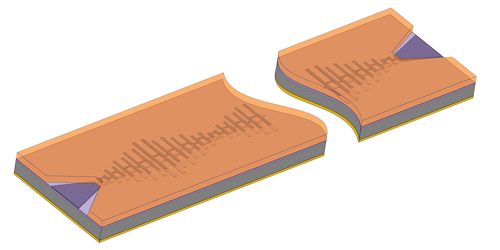A Simple Solution for Microwave Amplification
From quantum computers to dark-matter detectors, many quantum-based technologies depend on the ability to detect and amplify weak microwave signals at cryogenic temperatures. The state-of-the-art amplifiers required for the most demanding applications are very difficult to implement—only a few groups have done so, using a complex fabrication process that’s not widely available. Now, researchers have come up with a simple and efficient design for these so-called traveling-wave parametric amplifiers (TWPAs), allowing fabrication even in academic labs.
A TWPA works by boosting a weak microwave signal with energy transferred from a high-power microwave source, called the pump. Both the pump and signal traverse the length of the TWPA together. To optimize the energy transfer, they must travel in sync. However, the pump tweaks the refraction index of the material as it goes, slowing the signal and nudging it out of phase with the pump.
Nicolas Roch of the Néel Institute in France and colleagues found a way to compensate for the refractive modification and slow the pump and signal by the same amount. On a small square of silicon, they fabricated a TWPA comprising a series of 2000 connected SQUIDs—essentially, tiny superconducting loops—whose heights vary periodically. This periodic variation opens up a band gap in the material that is located near the pump’s frequency and that slows the pump and keeps it in phase with the signal.
This novel, adjustable TWPA performs as well as the conventional type but is far easier to fabricate. The team hopes that their relatively simple solution to the phase-matching problem will finally unleash the full potential of these amplifiers by making them more widely available.
This research is published in Physical Review X.
–Christopher Crockett
Christopher Crockett is a freelance writer based in Arlington, Virginia.




